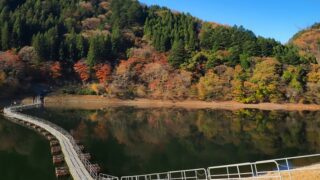Discover a New World of Birdwatching by Camper Van
If you’re looking for an immersive way to connect with nature in Japan, a camper van is an ideal travel companion. From forest trails and wetlands to coastal habitats and mountain areas, Japan’s diverse landscapes become the stage for breathtaking bird migration stories. The freedom of camper van travel opens up a wealth of possibilities for birdwatching schedules and destinations. In this guide, you’ll learn about the benefits of combining birdwatching with camper van life, highlights of each season, essential gear, a sample two-day itinerary, and tips on getting the most out of your birding adventures. Grab your favorite binoculars or camera, and get ready for exciting encounters with Japan’s birdlife!
The Benefits and Appeal of Birdwatching by Camper Van
Flexible Accommodation in Nature
One of the biggest perks of a camper van is the ability to move from one birding hotspot to another while having your accommodations with you at all times. Unlike traditional hotels, you won’t be bound by check-in or check-out times. That means you can head out for pre-dawn birdwatching or stay out late for sunset photography whenever you like.
Ample Storage and Quick Transitions
Camper vans provide plenty of room for storing gear like binoculars, telephoto lenses, and tripods. If your initial birding spot isn’t active due to seasonal changes or unexpected weather, simply drive to the next location or wait it out on-site—no packing and unpacking required. This flexibility makes it easier to adapt to the birds’ unpredictable patterns.
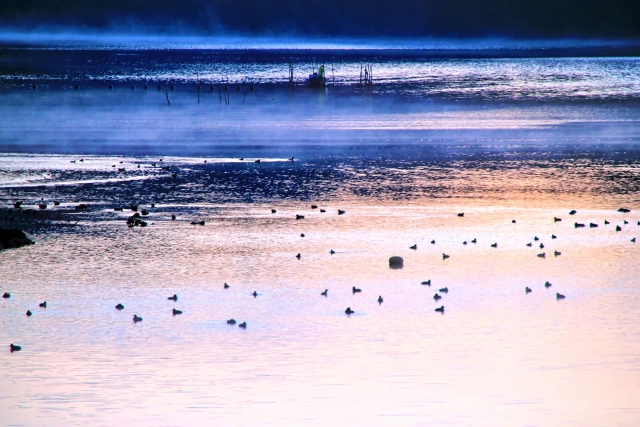
The Magic of “Staying Where You Watch”
Perhaps the most unforgettable aspect of birdwatching by camper van is the ambiance of overnighting right where the birds are. Listen to night birds calling under moon and starlight, then greet the new day alongside them at dawn. This immersive experience brings you closer to nature’s rhythms in a way that’s hard to replicate with ordinary travel.
Seasonal Highlights: Migratory Birds and Recommended Habitats
Japan’s birdlife transforms dramatically from season to season, and a camper van allows you to follow the action wherever it leads.
Spring (March–May)
Spring is a dynamic time in Japan, as many birds head north after overwintering here, and others arrive for the local breeding season. During cherry blossom season, raptors such as the Grey-Faced Buzzard and Honey Buzzard may be spotted migrating in lines across the sky.
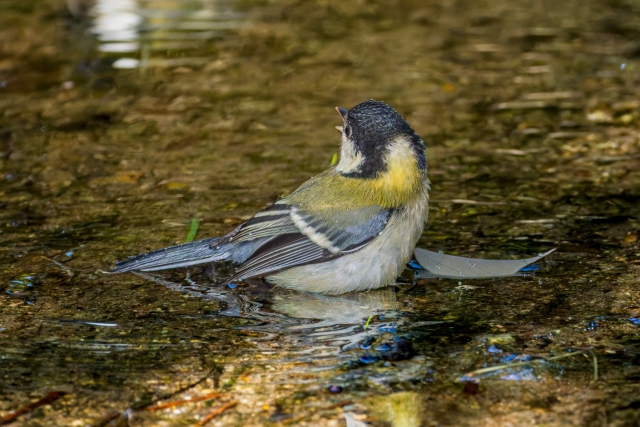
Where to Go
Mountain ridges and forest areas often serve as migration routes, making high-altitude passes and forest roads excellent birding spots. With a camper van, you can stay near the mountain base and venture out before sunrise for the best viewing opportunities.
Summer (June–August)
Summer is prime breeding season for resident and summer birds. You’ll hear the calls of the Common Cuckoo, Lesser Cuckoo, Blue-and-White Flycatcher, and Narcissus Flycatcher, among others. Wetlands and highland meadows may reveal storks and herons searching for food.
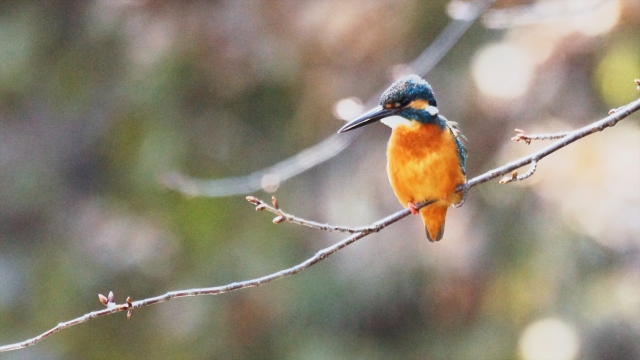
Where to Go
Beat the humid summer heat by traveling to cooler coastal areas or mountainous highlands. Your camper van’s air conditioning will be a welcome relief between birding sessions, helping you stay comfortable and healthy.
Fall (September–November)
In fall, the bird migration patterns reverse. Ducks, geese, and swans arrive from colder regions, gathering in lakes, rivers, and tidal flats. Shorebirds like sandpipers and plovers also stop over on their way south, meaning a surge in species diversity.
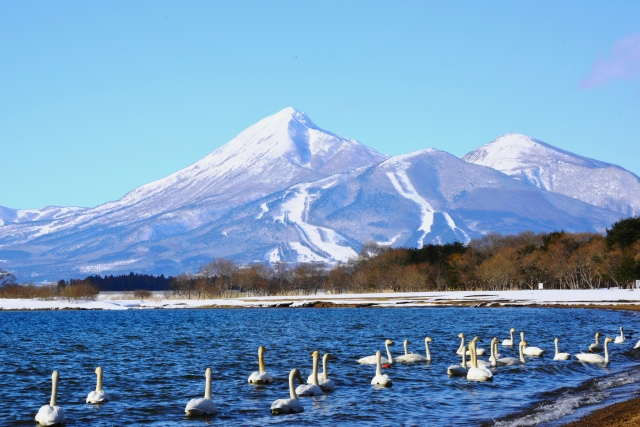
Where to Go
Coastal areas and mudflats become vital resting spots for migratory birds. Plan your visit around low tide to catch them feeding and resting in large flocks. With a camper van, you can time your arrival for optimal birding and move on to nearby attractions when the tide comes in.
Winter (December–February)
Winter sees swans, mallards, pintails, and bean geese congregating in ponds and rivers across Japan. In northern regions like Hokkaido and Tohoku, magnificent Steller’s Sea Eagles and White-tailed Eagles make impressive appearances. Snowy landscapes provide a stunning backdrop for photography.
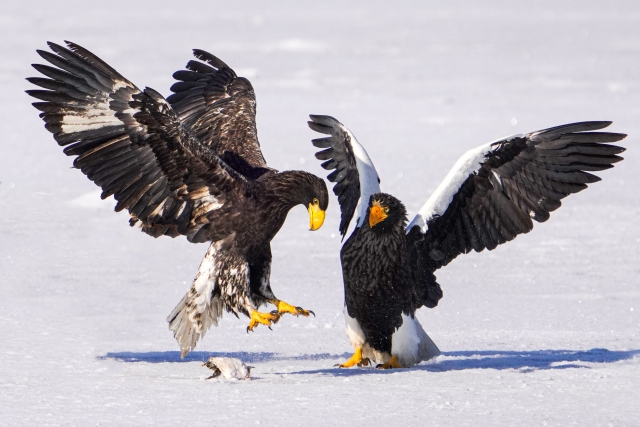
Where to Go
Freezing temperatures call for proper winter gear, but your camper van’s heating system ensures a cozy retreat. The crisp morning air can lead to magical encounters—think hoarfrost, dramatic morning skies, and birds in silhouette.
Essential Gear and Supplies
- Binoculars (8–10x): A must for spotting distant birds. Models with image stabilization help you track movement.
- Camera with Telephoto Lens: A 300mm lens or longer is recommended for framing distant birds.
- Tripod or Scope: Camper vans have the storage space to carry these bulkier items, improving your observation range.
- Outdoor Essentials: Rain gear, warm clothing, insect repellent, and plenty of water and snacks are crucial. Weather in natural environments can shift rapidly, especially at dawn or dusk.
- Camper Van Comforts: Foldable chairs, a compact table, and adequate bedding make early morning starts or late-night stakeouts much more comfortable.

Two-Day Birdwatching Itinerary (Example)
Day 1 (Early Morning–Night)
- Pre-dawn Departure: Hit the road in your camper van, aiming to arrive near the birding location before sunrise. Take short breaks at roadside stations (michi-no-eki) as needed.
- Morning Birding: Explore forests or mountainous areas just after sunrise, when bird activity peaks. Get your binoculars and camera ready to capture the early light.
- Lunch Break: Prepare a simple meal in the camper van’s kitchenette and rest up for the afternoon session.
- Afternoon Spot-Hopping: Move to a different habitat—wetlands, coastlines, or a higher-elevation area—to see a variety of species.
- Night Stay: Park at an approved overnight spot—such as a designated RV park, campsite, or roadside station. Plan your next morning’s route before turning in.
Day 2 (Early Morning–Evening)
- Pre-dawn Birding: Head out again before sunrise. Stick with the same spot or visit nearby wetlands or riverbanks for a fresh lineup of species.
- Late Morning: Venture into forested areas to listen for songbirds, or time your visit to tidal flats for shorebird sightings.
- Lunch & Photo Review: Return to your camper van to review your photos, organize your observations, and recharge your energy.
- Afternoon Return: Wrap up birding in the early afternoon and begin the journey home. Take your time—there’s no rush when you travel by camper van.
- Evening: Once home, clean and store your binoculars, camera, and other gear. Reflect on the incredible encounters, and start dreaming of your next trip.
Finding the Best Birding Spots and Doing Your Research
Birds favor specific habitats, so if you have particular species in mind, do some homework first. Check local nature centers, tourism offices, or birdwatching groups’ websites for seasonal migration data. In Japan, the Wild Bird Society of Japan (日本野鳥の会) offers valuable information and organizes events that cater to various skill levels.
It’s also crucial to plan routes that accommodate your camper van. Since camper vans are larger than regular cars, look into parking options and road conditions beforehand. Verify that there’s enough space to park safely near your chosen habitats.
Tips for Observing and Photographing Birds
Tips for Observing and Photographing Birds
| Bird Photography Techniques |
|---|
1. Stay Aware of Movement and Sounds Locate birds by eye or ear first, then switch to binoculars. Move quietly and maintain a respectful distance. |
2. Camera Settings for Flight Shots A fast shutter speed (around 1/1000s or faster) is often needed for in-flight shots. Use burst mode to increase your chances of a great photo. |
3. Autofocus and Subject Tracking Smaller birds in flight can be challenging. Experiment with your camera’s continuous autofocus or tracking features to keep them in focus. |
4. Environmental Composition Think about the setting as well. Capturing the surroundings—forest, wetland, seaside—helps tell the story of each bird’s habitat. |
Birdwatching Etiquette and Safety
Birdwatching is a privilege. Always remember you’re a visitor in the birds’ habitat.
Responsible Birdwatching: Etiquette Guidelines
| Birdwatching Best Practices |
|---|
Keep Your Distance
|
Manage Noise and Light
|
Leave No Trace
|
Conclusion: The Inspiring World Unlocked by a Camper Van
From soaring hawks to gracefully swimming swans, Japan’s birdlife offers a colorful spectacle across all four seasons. By traveling via camper van, you’ll have the freedom to follow the birds on your own schedule—allowing you to experience their daily routines up close, even in the stillness of night or the glow of early dawn.
Nature in Japan is ever-changing, with shifting temperatures, rainy spells, and seasonal extremes. A camper van offers the comfort and flexibility to roll with these changes, so you can focus on the joy of birdwatching rather than logistical challenges. Embrace the unpredictable beauty of the outdoors, and you’ll discover incredible surprises at every turn.
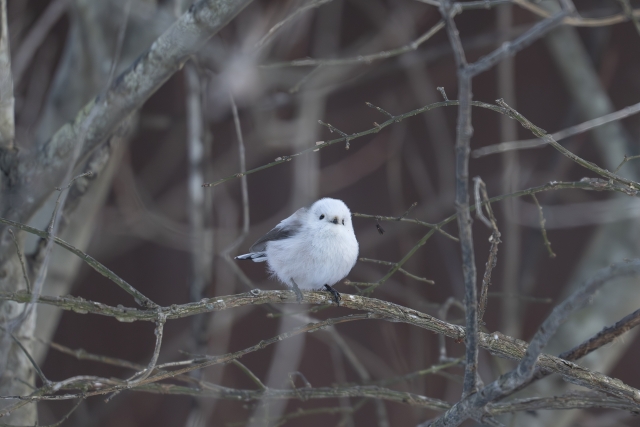
Whether you’re a seasoned birder or a newcomer, a camper van birdwatching trip will offer fresh insights and unforgettable memories. Treat the environment with care, cherish your encounters, and enjoy the journey—this special way of traveling is sure to enrich your connection with nature and turn your trip into something truly remarkable.



















